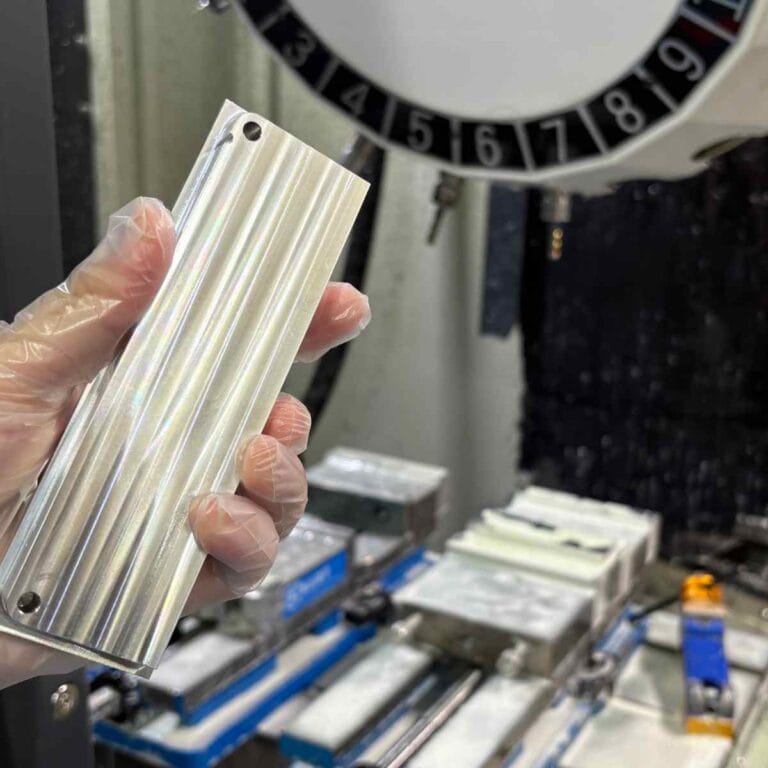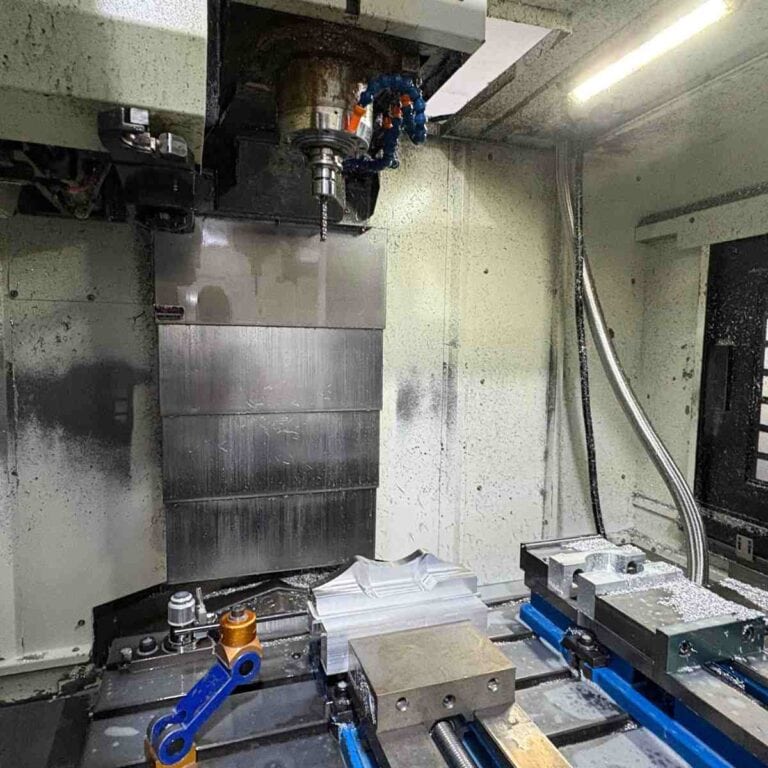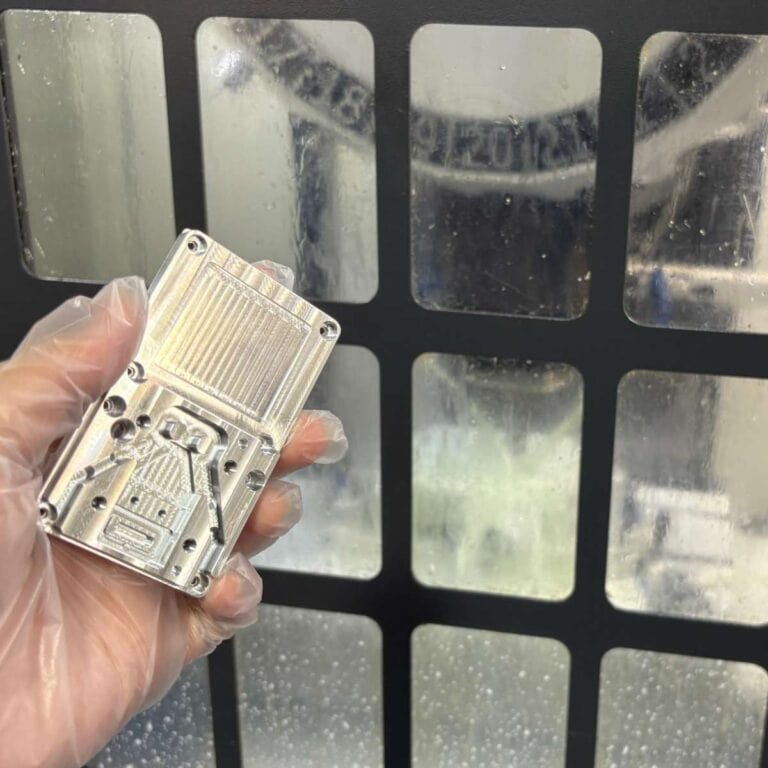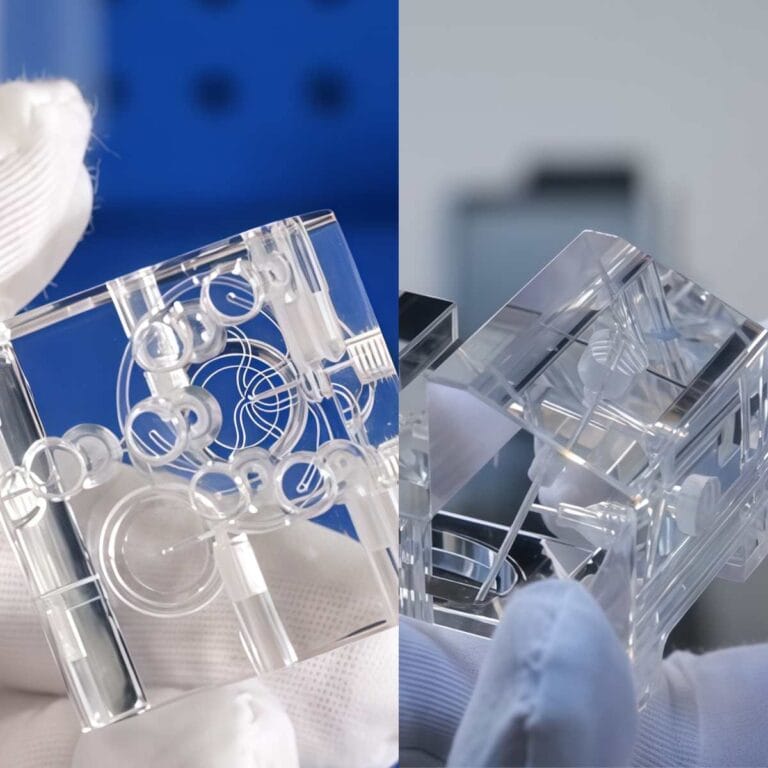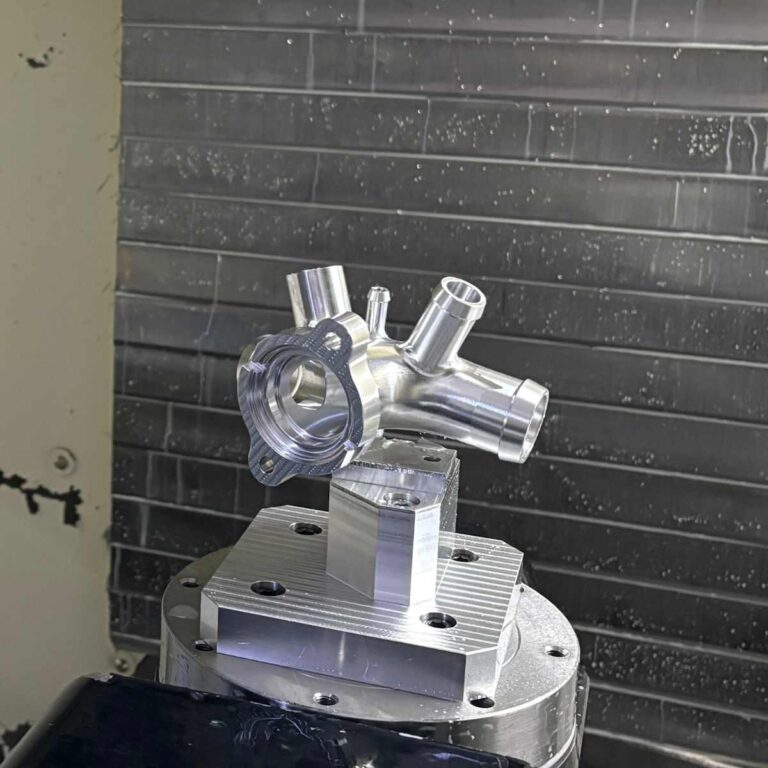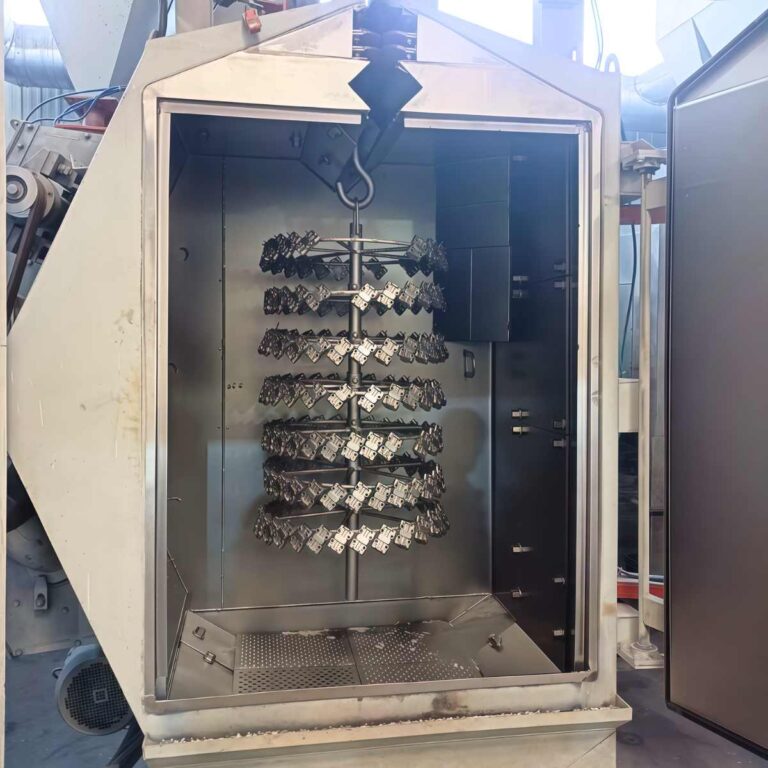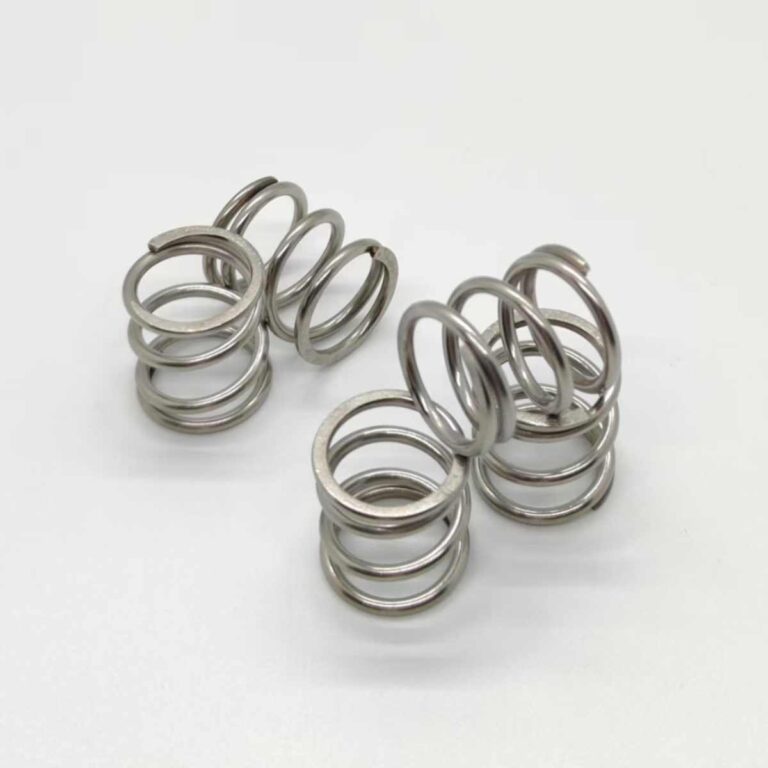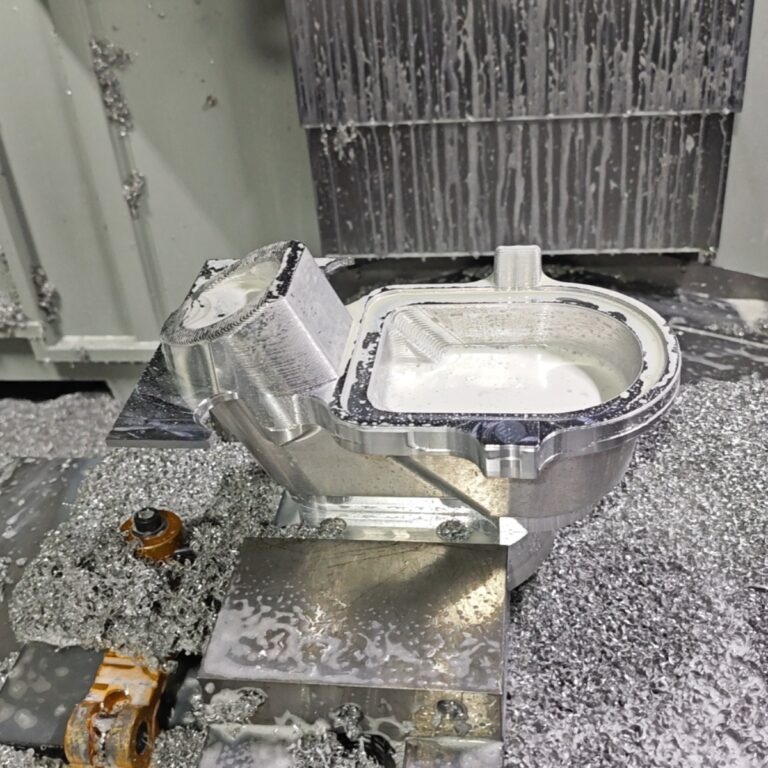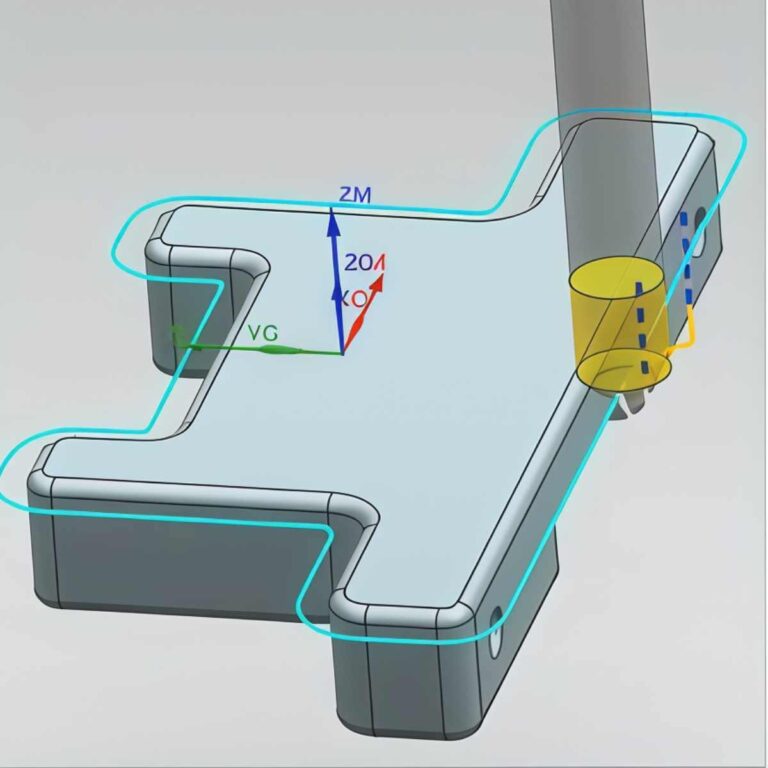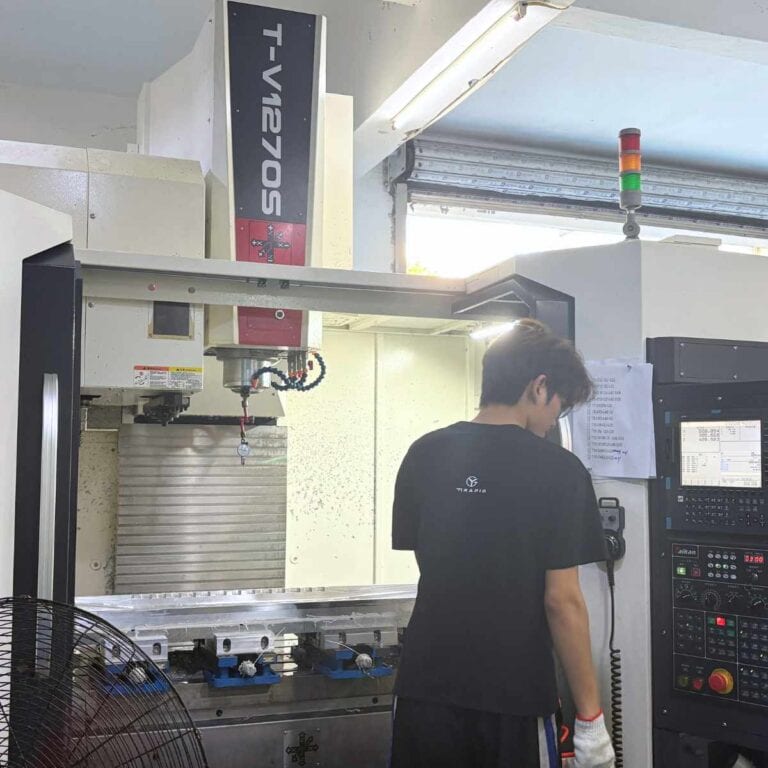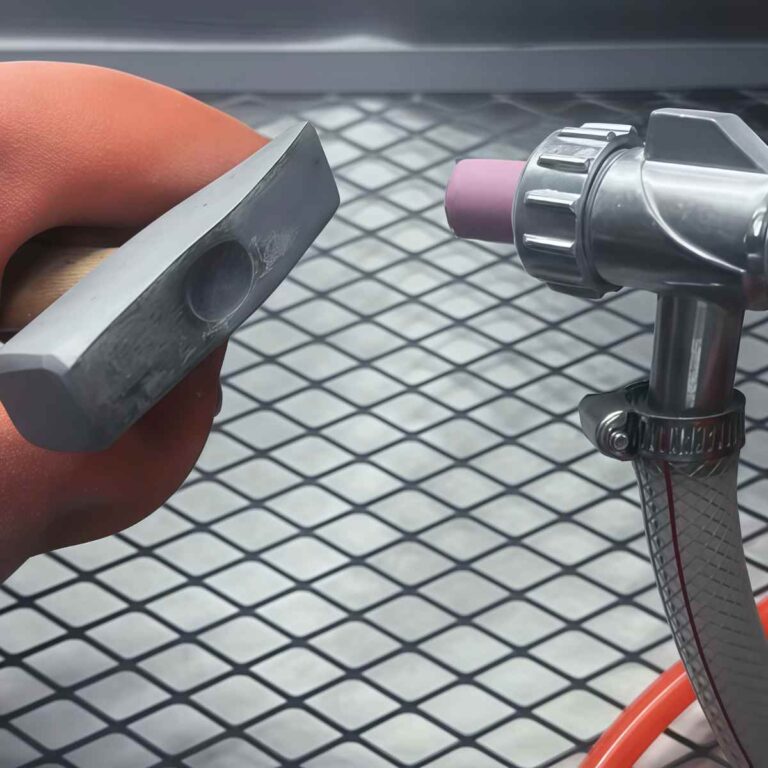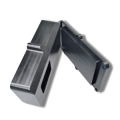In modern manufacturing, precision drives success. CNC precision machining plays a vital role in producing aerospace and medical components. Using computer-controlled tools, it achieves micron-level accuracy and consistency, turning complex designs into reality. This article outlines the key principles, processes, and applications of CNC precision machining for high-precision manufacturing.
What Is CNC Precision Machining
CNC precision machining is a computer-controlled process ensuring high accuracy and surface quality. It’s vital in aerospace, automotive, and medical industries, offering better repeatability, efficiency, and complex-part capability than traditional machining.
Get 20% offf
Your First Order
Principle Of CNC Precision Machining
CNC precision machining is a subtractive manufacturing process controlled by digital programs.
Its core principles include:
Program Control: CAD/CAM software generates G-code to precisely control tool paths, feed rates, and cutting depths.
High-Precision Machinery: Modern CNC machines achieve ±0.002mm positioning accuracy, 5-axis systems enable simultaneous multi-angle cutting.
Closed-Loop Feedback: Laser and encoder systems correct real-time deviations for consistent dimensional accuracy.
When To Choose CNC Precision Machining
Choosing the right process determines both cost and quality. CNC precision machining is ideal when:
High Accuracy is Required: For aerospace valves, medical implants, or optical mounts demanding ±0.005mm tolerance.
Complex Geometries: 5-axis machines handle angled holes, curved surfaces, and deep cavities in a single setup.
Low Volume or Prototype Runs: CNC offers fast turnaround without expensive molds, saving time and tooling costs.
Multi-Material Compatibility: Suitable for metals, plastics, titanium, and composites across multiple industries.
For example, a European robotics client switched from casting to CNC machining due to frequent design changes. The result? Lead time dropped from 4 weeks to 8 days, and part consistency improved by 30%.
How Does CNC Precision Machining Work
CNC precision machining follows a tightly controlled process from digital design to finished parts. Each stage—CAD, DFM, CAM, setup, machining, and inspection—affects precision, surface finish, and lead time. A well-optimized workflow ensures ±0.005mm accuracy, faster turnaround, and fewer reworks.
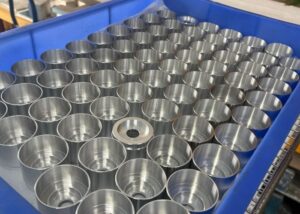
CAD Design & DFM Review
CNC precision machining begins with CAD design, where engineers model parts using tools like SolidWorks or Fusion 360, defining geometry, tolerances, and surface finish.
Then, a DFM review checks manufacturability — identifying deep cavities, thin walls, or sharp corners that may cause tool deflection.
For instance, an aluminum housing with an 80mm cavity and 2mm base was redesigned to 65mm depth with ribs, improving rigidity and dimensional stability.
CAM Programming & Toolpath Generation
Next is CAM programming using Mastercam, PowerMILL, or Fusion 360 CAM to generate toolpaths and G-code.
Key steps include:
Selecting optimal tools and parameters.
Minimizing idle paths and tool changes.
Applying multi-axis strategies for smooth surface finishing.
For titanium medical parts, a “helical cutting + layered roughing” strategy extended tool life by 30% and achieved Ra 0.6μm finish.
Machine Setup & Datum Alignment
Setup is critical for accuracy. Using touch probes or laser tools, machinists establish the X-Y-Z zero point.
Stable fixtures (vacuum plates, quick-change systems, or vises) minimize vibration and displacement.
When machining a 5-axis aerospace bracket, our zero-point system held setup deviation under ±0.002mm and reduced changeover time by 25%.
Machining Operations (Milling, Turning, Drilling, etc.)
This is the production core:
CNC milling for surfaces, slots, and cavities.
CNC turning for shafts and round parts.
Drilling for holes and threads.
In a stainless-steel connector project, our 4-axis setup produced parts with ±0.005mm consistency and a 99.7% yield rate.
In-Process Measurement & Compensation
Precision is maintained through in-process measurement using probes or laser scanners.
If deviations exceed ±0.003mm, the machine automatically applies tool offsets.
In mold insert production, automatic checks every 10 parts ensured continuous accuracy and zero scrap.
Post-Processing & Surface Finishing
After machining, parts go through deburring, polishing, anodizing, sandblasting, or plating to enhance appearance and durability.
Our aluminum components often use anodizing plus sandblasting for a smooth matte surface and 30% higher surface hardness.
Final Inspection & Documentation
The final stage involves comprehensive CMM inspection, surface roughness testing, and visual verification.
After approval, QC reports, material certificates, and inspection drawings are provided for full traceability.
For export projects, ISO 2768 and AS9100-compliant documentation ensures clients can confirm quality before shipping.
What Are The Factors That Affect CNC Machining Accuracy
In CNC precision machining, accuracy defines product reliability and longevity. Achieving ±0.005 mm precision—or even tighter—depends on multiple factors including machine stability, tool wear, thermal deformation, fixture rigidity, programming, and measurement feedback.
Common Tolerance Ranges Of “High Precision”
“High precision” is a relative term defined by part function and industry standards. Typical tolerance levels are:
| Process | Standard Tolerance | High Precision | Ultra Precision |
| Milling | ±0.02 mm | ±0.005 mm | ±0.002 mm |
| Turning | ±0.01 mm | ±0.005 mm | ±0.002 mm |
| Grinding | ±0.005 mm | ±0.002 mm | ±0.001 mm |
| EDM | ±0.01 mm | ±0.005 mm | ±0.003 mm |
How To Use GD&T To Ensure Functional Accuracy
GD&T (Geometric Dimensioning and Tolerancing) defines part geometry and relationships to ensure functional precision. Unlike basic linear tolerances, GD&T uses symbolic notations to control shape, orientation, and runout for assembly compatibility.
Key GD&T features:
Position tolerance – aligns holes with mating parts.
Flatness – ensures sealing surfaces fit properly.
Concentricity – maintains rotational alignment of shafts.
Runout – controls vibration in rotating components.
Key Factors Affecting Dimensional Stability
Dimensional stability depends on more than just machine accuracy—it’s affected by environment and process conditions. Key factors include:
Thermal deformation – material expansion due to heat, keeping temperature within ±1 °C reduces error by ~50%.
Tool wear – carbide tools degrade faster when cutting stainless steel or Inconel, frequent tool offsets are essential.
Fixture rigidity and stress relief – improper clamping or residual stress can cause post-machining distortion.
Machine calibration – regular laser and spindle alignment ensures consistent repeatability.
What Types Of Machine Tools Can Be Used For Precision Machining
Precision machining depends on advanced CNC machines, each with unique strengths — from 5-axis milling for complex parts to deep-hole drilling and micro-EDM for hard metals. Understanding these capabilities helps optimize design and sourcing, improving efficiency and precision by over 30%.
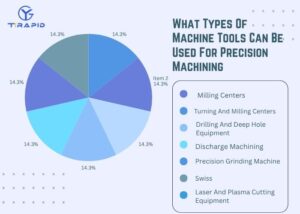
Milling Centers (3-Axis To 5-Axis)
Milling centers are the backbone of precision machining:
3-axis: Handles planes, slots, and holes with ±0.01 mm accuracy.
4-axis: Adds rotational motion for curved and cylindrical parts.
5-axis: Enables complex, multi-face machining in one setup, reaching ±0.005 mm tolerance.
Turning And Milling Centers
Turning centers excel at cylindrical parts like shafts and valve cores, typically achieving ±0.005 mm concentricity.
Mill-turn centers integrate both operations on one machine, minimizing setup errors and improving efficiency.
Drilling And Deep Hole Equipment
CNC drilling machines handle standard holes with ±0.02 mm precision. Deep-hole drills (gun drills) achieve over 50× depth-to-diameter ratios—essential for hydraulic blocks and mold cooling channels.
Discharge Machining
EDM (Electrical Discharge Machining) removes material via controlled sparks, ideal for hardened steels, tungsten, and titanium.
Wire EDM:creates thin, complex contours.
Sinker EDM: forms cavities and fine grooves.
Accuracy can reach ±0.002 mm with Ra 0.2 µm finish.
Precision Grinding Machine
Grinding achieves the finest finishes and tightest tolerances. Surface, cylindrical, and centerless grinders reach ±0.001 mm accuracy with Ra 0.1 µm smoothness.
Swiss
Swiss-type lathes support slender parts with a guide bushing, minimizing deflection and improving rigidity. Ideal for medical pins, instrument shafts, and micro screws.
They typically achieve ±0.003 mm tolerance and excel in producing small parts (Ø1–20 mm) in large volumes.
Laser And Plasma Cutting Equipment
Laser and plasma cutting use high-energy beams for thin-walled or sheet metal parts.
Laser cutting achieves ±0.01 mm precision on stainless steel and aluminum, while plasma cutting is better for thick structural components.
Materials Suitable For CNC Precision Machining
CNC precision machining works with various materials, including metals, engineering plastics, and composites. Each has distinct mechanical and chemical traits. Choosing the right one helps achieve the ideal balance between precision, strength, and manufacturability.
| Category | Typical Materials | Key Properties | Common Applications |
| Metals | Aluminum (6061, 7075), Stainless Steel (304, 316), Titanium (Ti-6Al-4V), Brass, Copper | High strength, corrosion resistance, good thermal conductivity, excellent dimensional stability | Aerospace components, automotive parts, medical implants, heat exchangers |
| Engineering Plastics | POM (Delrin), PEEK, PC, ABS, Nylon (PA66+GF), PTFE | Lightweight, self-lubricating, chemical resistant, low thermal expansion | Medical devices, electronic housings, jigs and fixtures, precision gears |
| Composites | Carbon fiber reinforced polymer (CFRP), Glass fiber composites, Bakelite | High strength-to-weight ratio, electrical insulation, excellent stability | Aerospace panels, robotic arms, electrical components |
What Are The Main Advantages And Limitations Of CNC Precision Machining
CNC precision machining offers exceptional accuracy, efficiency, and material flexibility. From aerospace to medical parts, it delivers tight tolerances and complex designs. Yet, challenges like tool access and material waste remain, requiring smart design and sourcing choices.
Advantages
CNC precision machining achieves tolerances as tight as ±0.005 mm—far beyond manual methods.
Exceptional Accuracy & Repeatability: Closed-loop feedback and compensation algorithms maintain micron-level precision in mass production.
Speed & Efficiency: Multi-axis systems and automatic tool changers improve production by 30–50%, reducing lead times.
Material Flexibility: Handles aluminum, titanium, PEEK, and carbon composites with consistent quality.
In one aerospace project, using 5-axis machining reduced titanium blade production from 10 days to 6 while maintaining ±0.003 mm accuracy—cutting delivery time by nearly 40%.
Limitations
Despite its precision, CNC machining faces some physical and technical limitations:
Tool Accessibility: Deep cavities and undercuts often require special tooling or multi-step setups.
Fixturing Complexity: Irregular parts demand custom jigs, increasing preparation time and cost.
Material Waste: As a subtractive process, utilization often falls below 40%, especially for high-value metals like titanium.
When to Choose CNC Precision Machining
CNC precision machining is the preferred choice for:
Low-to-medium volume production: flexible without mold costs.
High-precision or complex parts: ideal for aerospace, robotics, and medical applications.
Iterative design stages: allows quick revisions and prototyping.
Multi-operation or irregular parts: enables multiple surfaces machined in one setup.
In a robotics joint project, an aluminum prototype produced via 5-axis machining achieved production-grade precision during early development, reducing the client’s validation time by two months.
How Do Cost, Lead Time, And Quality Control Impact Machining Projects
In CNC precision machining, cost, lead time, and quality are key to project success. Competitive pricing wins customers, reliable scheduling builds trust, and strict quality control ensures long-term cooperation. Balancing these factors helps optimize workflow and reduce risks.
Cost Structure and Optimization Strategies
The total cost of CNC machining mainly includes:
Material Costs (30–50%): especially metals like titanium and stainless steel with volatile pricing.
Machining Time: affected by equipment type, tool wear, and part complexity, 5-axis machines may cost twice as much per hour as 3-axis ones but save multiple setups.
Finishing and Inspection Costs: anodizing, plating, and detailed reports increase final pricing.
Optimization Tips
Design for Manufacturability (DFM): Simplify deep cavities, sharp corners, and non-standard threads.
Material Substitution: Switching from 7075 to 6061 aluminum can cut material costs by ~20%.
Batch Production: Larger runs reduce per-unit costs by 10–30%.
In one medical device project, optimizing thread geometry reduced machining time by 15% and overall cost by 12%.
Ways to Shorten Lead Time
Delays often occur due to incomplete files or unclear specs.
Standardized Documentation: Confirm 3D/2D drawings, tolerances, and finishes early to avoid rework.
Parallel Production: Run multiple machines or use lights-out machining to reduce turnaround time by up to 30%.
Digital Scheduling: Implement MES tracking for real-time visibility and proactive bottleneck management.
For example, by adopting a split-shipment strategy for an automation client, we delivered critical parts 5 days earlier, enabling their assembly testing to stay on schedule.
Quality Inspection and Control Measures
Precision machining quality depends on systematic verification:
First Article Inspection (FAI): Validates initial parts against design specs.
In-Process Monitoring: CMM and laser scanning detect deviations during production for real-time correction.
Final QC: Full dimensional reports and material traceability for every batch.
Compliance with ISO9001 and AS9100 standards builds client confidence.
How To Choose The Right CNC Precision Machining Partner
Choosing the right CNC precision machining partner impacts quality, delivery, and cost. A reliable supplier combines advanced machines, certifications, and technical expertise. Beyond pricing, evaluating capability and process control ensures smooth, efficient production.
Equipment Capability and Certifications
When evaluating a supplier, equipment range and quality systems come first.
Equipment Capability
A strong machining partner typically runs 3-axis to 5-axis machining centers, CNC lathes, EDM, wire cutting, and CMM inspection systems. A 5-axis machine can complete multi-surface machining in one setup, improving accuracy and efficiency by up to 30%. Features like Automatic Tool Changers (ATC) and lights-out machining indicate advanced automation capabilities.
Certifications
Look for suppliers with ISO9001, ISO13485, or AS9100 certifications. These confirm strict process control, measurement traceability, and documentation compliance.
For example, one of our U.S. aerospace clients required AS9100-certified manufacturers only.
Case Studies and Quotation Essentials
Beyond machines and certificates, case studies and communication efficiency reveal a supplier’s true reliability.
Case Studies
Top suppliers often showcase multi-industry projects, such as maintaining ±0.005 mm tolerance for aerospace components or high-gloss finishing on complex plastic housings for medical devices. Reviewing case histories helps gauge their problem-solving skills and technical experience.
Quotation Essentials
Documentation: Include full 3D/2D drawings, material specs, quantities, and surface finish requirements.
Response Time: Reliable suppliers typically respond within 24 hours with a DFM report.
Lead Time Breakdown: Request a clear timeline from order confirmation to delivery.
Quality Assurance: Ask for examples of CMM inspection reports and material certificates.
In one project, our client compared three suppliers based on delivery time and QC standards. The supplier with a shorter lead time and stronger inspection process delivered 5 days early — significantly improving overall satisfaction.
Typical Industries Using CNC Precision Machining
CNC precision machining is essential across aerospace, medical, automotive, electronics, energy, and defense industries. Each sector demands unique materials, tolerances, and finishes—ranging from ±0.002mm accuracy to advanced 5-axis machining—ensuring high strength, reliability, and consistency for critical components.
| Industry | Typical Applications | Key Requirements |
| Aerospace | Turbine blades, structural components, fuel system manifolds | Ultra-tight tolerances (±0.002mm), anodizing or hard-coating for corrosion and wear protection. |
| Medical Devices | Surgical tools, implants, imaging system brackets | Biocompatible materials (titanium, 316L stainless steel), mirror finish, ISO13485 compliance. |
| Automotive | Engine housings, transmission gears, brake system parts | High strength, consistent batch precision, and efficient production. |
| Electronics & Semiconductors | Heat sinks, metal enclosures, test fixtures, connector frames | Micro-feature machining with excellent thermal conductivity using aluminum or copper alloys. |
| Oil & Energy | High-pressure valve bodies, drill bits, corrosion-resistant components | Nickel-based or stainless alloys for extreme temperature, pressure, and corrosion resistance. |
| Defense & Optics | Weapon components, optical barrels, guidance systems | High precision alignment and optical-grade surfaces, typically 5-axis machining with aluminum or titanium. |
What Are The Future Trends In CNC Precision Machining
CNC precision machining is entering an era of automation, AI optimization, and sustainable manufacturing. The future factory operates through intelligent algorithms, real-time feedback, and closed-loop systems — enabling lights-out manufacturing with high precision, lower costs, and reduced environmental impact.
Automation and Closed-Loop Measurement
Automation is the foundation of modern precision manufacturing. Robotic arms, AGVs, and smart logistics systems enable 24/7 machining operations. Closed-loop measurement eliminates human error by using sensors and CMM data feedback for in-process correction.
In an aerospace component project I worked on, integrating laser probe inspection reduced scrap rates by 40% and cut delivery time by two days — proving that self-correcting machining is the new standard in high-end manufacturing.
CAM and AI-Driven Optimization
Next-generation CAM systems will integrate AI to automatically optimize feeds, speeds, and toolpaths based on real-time data. AI-powered algorithms analyze tool wear and cutting forces to maximize productivity.
Leading CNC workshops already combine AI with MES systems for data-driven optimization — increasing tool utilization by 20% and reducing programming time by 50%. This smart automation empowers manufacturers to achieve consistent quality and efficiency.
Sustainable and Digital Manufacturing
Sustainability is becoming a core manufacturing principle. CNC precision machining now focuses on energy efficiency, tool life extension, and material recycling. Digital twin technology allows virtual simulation to predict energy use and optimize process flow.
For instance, a European medical device company reduced energy consumption by 15% while maintaining ±0.002mm accuracy through digital monitoring — demonstrating that precision and sustainability can go hand in hand.
FAQs
What’s The Difference Between CNC Precision Machining And Standard CNC Machining?
CNC Precision Machining achieves tolerances as tight as ±0.002 mm, while standard CNC machining typically holds ±0.05 mm. I use precision equipment like 5-axis mills and CMM inspection to ensure micron-level accuracy, essential for aerospace, medical, and semiconductor components requiring flawless fits.
How Can I Tell If A Machining Facility Has High-Precision Capabilities?
I look for ISO 9001 or ISO 13485 certifications, climate-controlled workshops, and advanced tools like CMMs or laser probes. A true high-precision facility maintains ±0.002 mm tolerance consistency, uses digital inspection reports, and operates on stable temperature systems within ±1 °C.
What Are The Types Of CNC Precision Machines?
The main types I work with include 3–5 axis milling centers, CNC lathes, Swiss-type turning machines, EDM (wire & sinker), and precision grinders. Multi-axis systems offer the highest flexibility, achieving 30–50% faster cycle times and complex geometries with sub-micron repeatability.
Is CNC Precision Machining Expensive?
Yes, but it’s cost-effective long-term. Precision machining costs 20–40% more initially due to advanced tools and inspection, yet it eliminates rework and assembly failures. I’ve seen clients reduce total project costs by 25% through fewer defective parts and faster assembly alignment.
How Accurate Is CNC Machining?
Standard CNC machining achieves ±0.01–0.05 mm accuracy, while precision machining can reach ±0.002 mm or finer. In my facility, 5-axis machines paired with laser calibration deliver repeatability within ±0.001 mm—roughly one-third the width of a human hair, ensuring perfect mechanical fits.
Conclusion
CNC precision machining is not just a manufacturing method — it’s a bridge connecting design, engineering, and product quality.Through digital control and high-precision execution, it enables complex structures and ensures reliable product performance.In the future, automation, intelligence, and sustainable manufacturing will keep CNC precision machining at the heart of advanced production.What needs or ideas do you have regarding CNC precision machining?It will be appreciated receiving your message!

